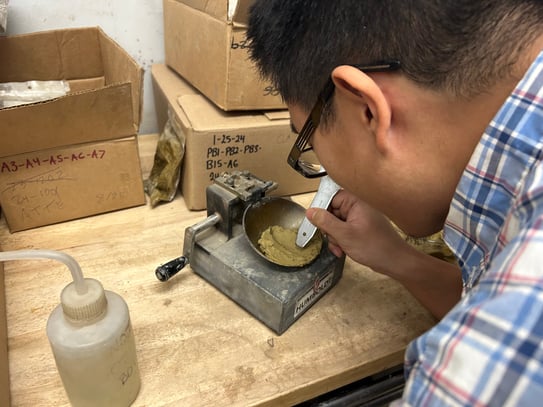The Atterberg Limit: How does this test ensure a solid foundation?
February 2nd, 2024 | 2 min. read

The safety and long term success of a building's foundation hinges on the characteristics of the soil beneath the structure. One method for evaluating these characteristics is Atterberg soil testing, which analyses and classifies soil by its plasticity. High plasticity soils exhibit significant changes in volume and consistency when water is added or removed. Knowing the soil's plasticity allows the engineer to predict soil behavior in response to environmental changes and determine the suitability and stability of a soil for particular construction project.
Atterberg soil testing involves the determination of the Atterberg limits, namely the liquid limit, plastic limit, and shrinkage limit. These limits help classify soils into different categories, providing valuable information about their behavior under various moisture conditions.
Understanding how much soil will expand/contract is crucial in preventing potential structural issues.

High-plasticity soils, known for their sensitivity to moisture changes, can expand more than low-plasticity soils. This expansion can lead to structural problems, affecting the stability of buildings and infrastructure. By classifying the soil based on Atterberg limits, engineers can predict and mitigate these issues before they arise.
The percentage of volume change with water content is a key parameter determined through Atterberg soil testing. This information helps engineers assess the soil's susceptibility to swelling or shrinking, providing insights into its expansiveness. High plasticity soils, in particular, can undergo significant changes in volume, making it essential to know the extent of this variation.
The expansiveness of soil is not uniform across all regions. It depends on factors such as climate, geological conditions, and the depth of the soil. Shallow soils are generally less expansive, while deeper layers may exhibit greater plasticity. This knowledge is crucial for site selection and foundation design. Building on shallow, non-expansive soils is generally safer and more stable, reducing the risk of structural damage over time.
 Expansive clays, a type of high-plasticity soil, pose unique challenges during construction. These soils are prone to significant volume changes with moisture variations, making them susceptible to pumping. Pumping occurs when water is added, causing the soil to behave like a fluid.
Expansive clays, a type of high-plasticity soil, pose unique challenges during construction. These soils are prone to significant volume changes with moisture variations, making them susceptible to pumping. Pumping occurs when water is added, causing the soil to behave like a fluid.
During earthwork, this fluid-like behavior can lead to difficulties in excavation and compaction, making construction surfaces dangerous and delaying the overall construction process. In addition, the weakness induced by pumping soils can compromise the structural integrity of foundations and structures. The increased risk of settling and uneven soil movement can lead to long-term issues such as foundation cracks and structural damage.
By classifying the soil and identifying its plasticity, engineers can implement suitable construction techniques and foundation designs to mitigate these risks.
Atterberg soil testing and soil classification are indispensable tools in geotechnical engineering. If our engineers have collected soil samples from your site, they must conduct classification tests, such as an Atterberg test, to complete a geotechnical report.
High plasticity soils, with their propensity for expansion and contraction, require careful assessment to ensure the safety and stability of construction projects. Understanding the Atterberg limits allows engineers to predict soil behavior, select appropriate construction methods, and implement effective foundation designs. Ultimately, soil classification is a proactive step towards ensuring the longevity and success of any construction endeavor.
Topics: